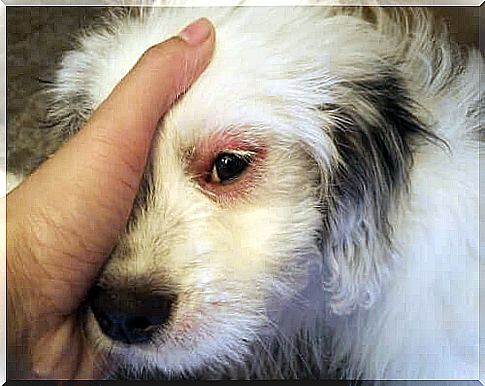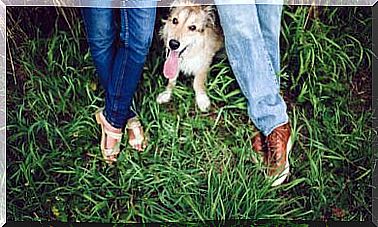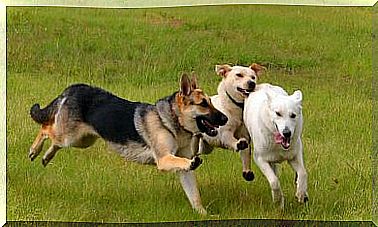3 Symptoms That Indicate Your Dog Has An Infection

As a caring owner, you may be concerned about how to recognize that your dog has an infection. In fact, as with humans, any animal can be infected throughout its lifetime.
Remember that, in general, there is nothing to be alarmed about. However, you should be aware if there is an epidemic situation in your neighborhood.
If you know what signs to recognize, it can help with early detection and timely treatment of any infection that develops in your dog.
What is an infection?
An infection is defined as the invasion of body tissues by disease-causing microorganisms. Micro-organisms that live in the body naturally are not considered infections.
We must remember that all of us who live on this planet carry millions of micro-organisms that live with us on – and inside – our bodies.
Not only do we live in balance with these microscopic beings, but they are also essential to many of our life processes. This set of ‘good’ microorganisms was named by science as a microbiome.
On the other hand, the causative agents of infectious diseases are usually not present in the body. As for their nature, they can be bacteria, viruses or parasites.
Infectious diseases – which are communicable – are caused by the multiplication of the causative agent. Another characteristic of infections is the reaction of host tissues to the pathogen or the toxins it produces.
Although an infectious process usually causes a range of symptoms, there are asymptomatic infections. That is, infections that occur without visible symptoms, known as subclinical infections.
1. Fever as an indication that your dog has an infection
Fever is one of the protective mechanisms the body uses to protect itself. As the temperature rises, the body prompts the immune system to defend itself against infection.

You may have heard that you can tell if your dog has a fever by touching its nose: hot and dry would mean a fever, but that’s not true. Fever in dogs is often unrecognized or undetected.
A temperature above 39°C is considered a fever in the dog, although he can get that temperature if he is too excited or stressed. Fever can usually be accompanied by lethargy, depressed mood, tremors, loss of appetite, vomiting, coughing, or a runny nose.
2. Enlarged lymph nodes
Lymph nodes are small, oval-shaped organs. These ganglia contain immune system cells that attack and kill pathogens such as viruses.
When the dog has an infection, its lymph nodes become active and send cells to fight the disease, which can become inflamed or painful. The condition of having swollen lymph nodes is known as lymphadenitis.
Although lymph nodes are present in your dog’s body, the easiest ones to find if they are swollen are the submandibular. They are on either side of the head, near the back of the jaws, where they meet the neck.
There are also axillary and popliteal ganglia located at the back of the knees.
3. Secretions
Keep in mind that the signs of bacterial infections usually depend on the location of the infection. Visible infections are usually subcutaneous, but they can also affect the surface of the skin. Lesions can be seen as sores or areas of swelling.
Swelling may present as a hard, firm area or a soft area. Infected areas may or may not be ulcerated on the surface and may also have a discharge.
The consistency and color of the secretions can vary from watery and pink or red – serosanguineous – to thick and yellow or green (pus). This discharge can have an unpleasant smell, especially if it looks like pus.
If the infection is present inside the body, where it cannot be seen with the naked eye, your puppy may show other signs of the disease. As a result, you may experience lethargy, loss of appetite and weight loss.
In cases of respiratory tract infections, it is possible to notice signs such as coughing, sneezing or abnormal breathing, for example. In these situations, secretions may be present in the nose or mouth, or in the eye area. Your puppy may even have difficulty eating or swallowing.

What to do when a dog has an infection?
Infections worry owners because they can be fatal if not treated in a timely manner. The severity of any type of infection will depend on the type of wound or injury, the location, how long it has been left untreated, and the dog’s immune system.
The infection can occur anywhere in the body, such as the lungs (pneumonia), the kidneys (pyelonephritis), the brain (encephalitis), or even the skin.
It is important that you do not hesitate to contact your veterinarian right away if you notice itching, redness, inflammation and a bad smell in your dog. The same also applies if you notice that the dog is scratching, licking or biting the skin excessively.
Diarrhea and vomiting can also be a sign that your dog has an infection.









